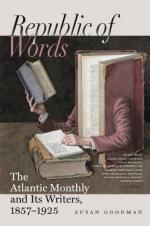Drawing-books, in general, deserve to be put into the same category with the numerous languages “without a master” which have deluded so many impatient aspirants to knowledge by royal (and cheap) roads. A drawing-book, at its very best, is only a partial and lame substitute for a teacher, giving instruction empirically; so that, be it ever so correct in principle, it must lack adaptation to the momentary and most pressing wants of the pupil and to his particular frame of mind; it is too Procrustean to be of any ultimate use to anybody, except in comparatively unimportant matters. It is well enough for those who need only amusement in their drawing, and whose highest idea of Art is copying prints and pictures; but for those who want assistance from Art in order to the better understanding of Nature, no man, be he ever so wise, can, by the drawing-book plan, do much to smooth the way of study.
All that another mind could do for us by way of teaching Art would be to save us time,—first, by its experience, in anticipating our failures; second, by its trained accuracy, to correct our errors of expression more promptly than our afterthought would do it,—and to systematize our perceptions for us by showing us the relative and comparative importance of truths in Nature. In the first two respects, which are merely practical, the drawing-book, if judiciously prepared, might do somewhat to assist us; but in the last and most important, only the experienced and thoughtful artist, standing with us before Nature, can give us further insight into her system of expression. A good picture may do a little, but it is Nature’s own face we need to study, and that neither book nor picture can very deeply interpret for our proper and peculiar perception.
In the practical part, again, the drawing-book can give us no real assistance in regard to color. And thus the efficacy of it is reduced to the communication of methods of drawing in white and black. This Chapman’s book does to the best purpose possible under the circumstances, in what is technically termed the right-line system of drawing,—that is, the reduction of all forms to their approximate geometrical figures in order to facilitate the measurements of the eye. Thus, it is easier by far to determine the proportion which exists between the sides of a triangle formed by the lines connecting the three principal points in any figure than any curvilinear connections whatever. The application of the rectilinear system consists in the use, as a basis of the drawing, of such a series of triangles as shall at once show the exact relation of the points of definition or expression to each other; but the successful application of this depends much on the assistance of the trained eye and hand of a master watching every step we make.




